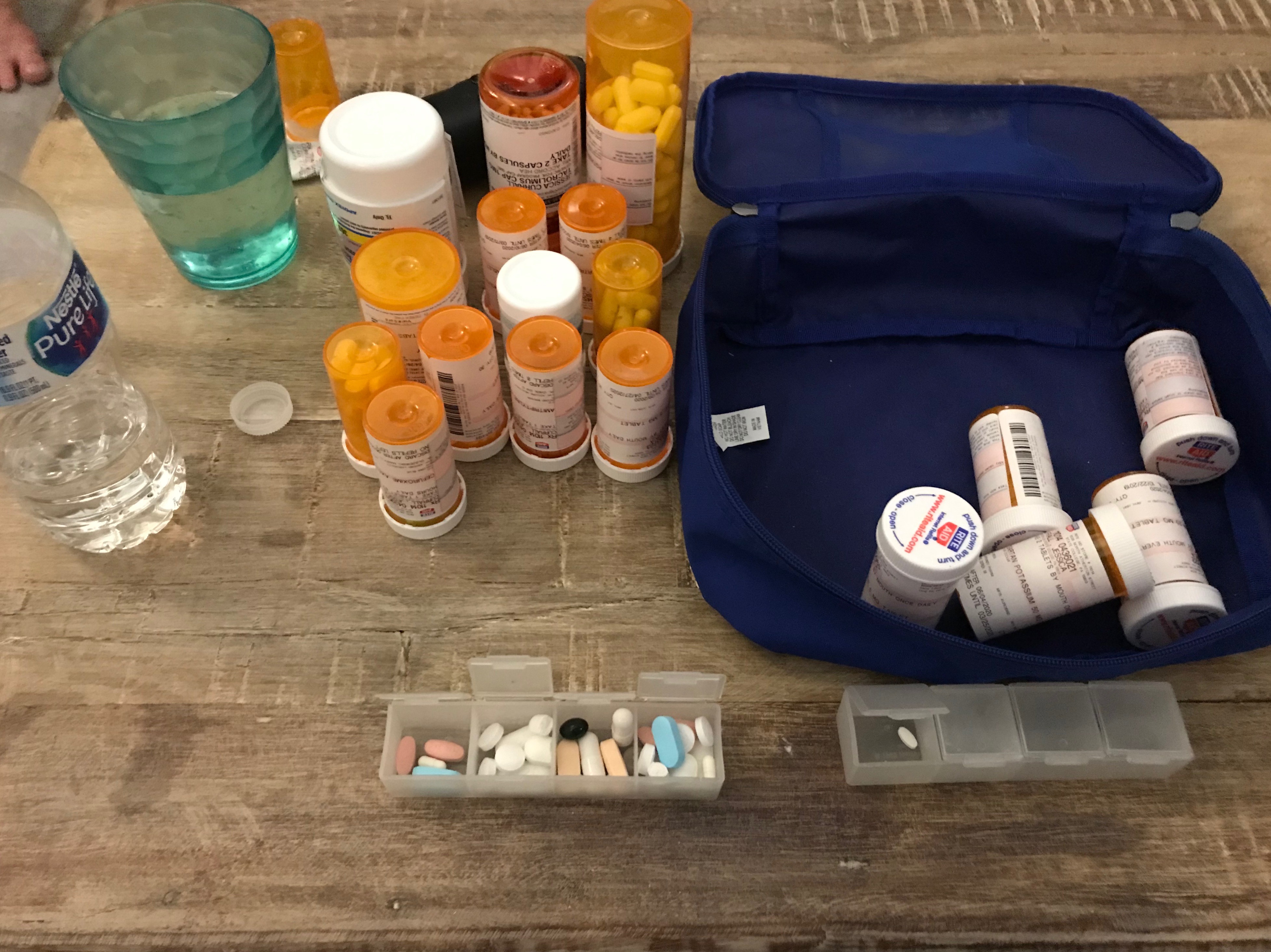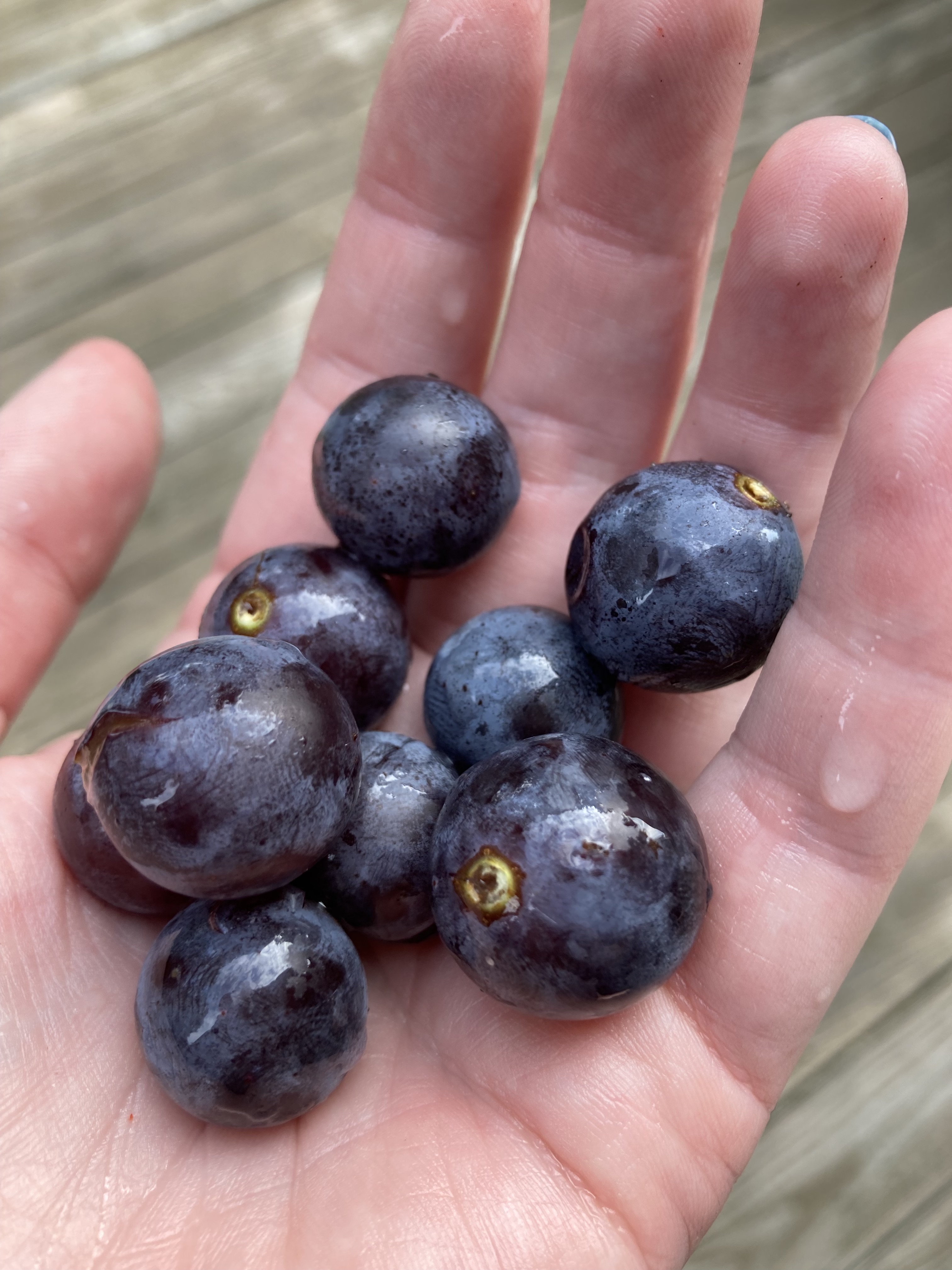For a surprisingly long time I shared information or asked questions about my prescription management as though other people in my life also kept track of 18 different medications — not including over-the-counter (OTC) pain killers, supplements, and vitamins. It was something of a realization that I take w-a-y more pills per month (~40 x 30 = 1,200), than my spouse does collectively in a year.
When I realized that, I started trying to keep those conversations to my physicians and their teams. I bring two versions of summary tables I update with any prescription change: alphabetically by generic name which includes notes on why I am taking each, and an outline of how I take my medications across the day.

I originally tried this method because I was working with a sleep specialist and wanted to see if any of the meds I take are associated with daytime sleepiness. Then, because I already had it, I shared it with both of my nephrologists (transplant and local) and they felt like this was helpful to get a snapshot of my regimen.
Given this perspective of my day, I was described as having a “heavy pill load;” which kind of amused me insofar as I have had no fewer than 26 pills per day for over 10 years now. While this particular snapshot has more than that, at some point, what’s the difference? The gap from 26 to 40 just feels insignificant when there’s already five routine times to take meds per day. I may be able to whittle that down again, but it’s unlikely to ever return to a quantity that would be consistent with “healthy” people.
My definition of “healthy” or “normal” people are those who do not do these kinds of tasks as part of their day, or even as part of their conversations with their physician.
The thing is: there is cost and risks to not having conversations with people other than physicians and their teams.
On August 26, 2021, I went into an Outpatient Lab Facility to complete my routine bloodwork and urinalysis. As a kidney transplant recipient, that has been part of my monthly monitoring for the last decade — with the caveat that in the early days post-transplant it was every few days, and presently with the pandemic, it is sometimes more like every 6 weeks. That’s around 120 times so far and does not reflect the number of times I complete bloodwork or urine samples for other reasons; most commonly, with a suppressed immune system, I am susceptible to urinary tract and bladder infections. Are those different or two names for the same thing? It feels like I should know that, but I don’t. Also, I have a jumpy pelvic floor. With endometriosis, appendectomy, a twin pregnancy with C-section, peritoneal dialysis, and kidney transplant all in the same region surgically, I carry myself with unusual core muscle allocation. That is, I don’t always use the muscles I should and this puts stress on the muscles that are compensating that can result in spasms and cramps that feel very much like the urgency associated with a urinary tract infection (UTI).
There is no joy in learning what I really really thought was a UTI isn’t because it means:
- I cannot trust my interpretation of what my body signals relay (I cannot trust myself),
- I am doing it to myself: I am the reason I am in pain, and
- it will be that much harder the next time I do have a UTI/bladder infection for me to recognize it.
Here’s a thing though that I have specialized/normalized into my life: “clean” catch urine sample procedures.

I worked with my Occupational Therapist for pelvic floor pain relief to develop this process, which was doubly appropriate since part of the challenge was in the fine motor skills (using my hands).
The summary version of my Clean Catch Protocol is:
- After I wash my hands, I tear each of three towelette packets along three of their outside edges and fold them open to try to maintain the ‘sanitary’ environment of the sealed packet.
- I unfold the towelettes a little bit — only in this way are they actually usable for me.
- I wipe myself down there (I’m not being coy, I actually cannot see the area I am working with), from front-to-back with each towelette separately ‘right, left, center’ and without ever letting myself ‘close’ because that would violate the whole point of cleaning. In the photo series, I used my laptop hinge to sort of illustrate this concept.
- (Not pictured, even metaphorically): Pee ‘some’ into the toilet and then move a collection cup into the ‘stream’ to capture at least 30ccs.
If you’ve never peed on your own hand, it is evident that you and I live very different lives. I do not intend to be gross or crude. The thing is, part of the deal with chronic illness is accepting a level of discourse you may have never imagined for yourself. Part of coping with that, for me, is a sense of [gallows] humor. I have been greeted hundreds of times with the question, “Can you urinate for us?” If that’s not funny, it’s surreal and absurd…bordering on nightmarish.
And, as many times as I have done this, I do not understand why this is the procedure for owners of vaginas. My personal experience is that no matter how careful I am there is a HIGH probability that the sample will be considered “contaminated.” I do not know what the quantitative count of how many times that has been told to me over the years, but the emotional toll is HIGH. Is there a comparable experience quite like being told, regularly, that your every effort to be ‘clean’ with your private parts was still too dirty? The advertisers of feminine hygiene products bank on that shame.
I would also extend that this is extremely difficult to talk about. It IS gross/general or crude/rough, in part, because no one talks about it. What do persons who have more challenged motor control than I do, do with this at all? Add it all up, most importantly: How does this ever get improved upon?
I don’t just mean make it so that it isn’t awkward or embarrassing — although I would argue those are valid goals on their own — a “contaminated” result is all that it tells. There is no other additional information learned. Some of those not-a-UTIs could not be verified based on the follow-up sample; that does not mean it wasn’t a UTI. The next step in the decision-making hierarchy in that event is if I have symptoms. My aforementioned history with this pattern is a conflict of interest and credibility. Also, if this information is important, it is important to increase its success rate in providing usable results. I cannot do that on my own.
This isn’t a journal entry about my awesome specialized experience in medication management or completing Clean Catch Urine Specimens. It’s a journal entry about sharing the awkward, crude, gross, surreal, absurd, and even nightmarish with the goal that it even they can be improved upon.
What becomes normalized THEN is: Someone else will hopefully not have as complicated a time. Plus, eventually, someone else will figure out how to make things even better.

End blip.


